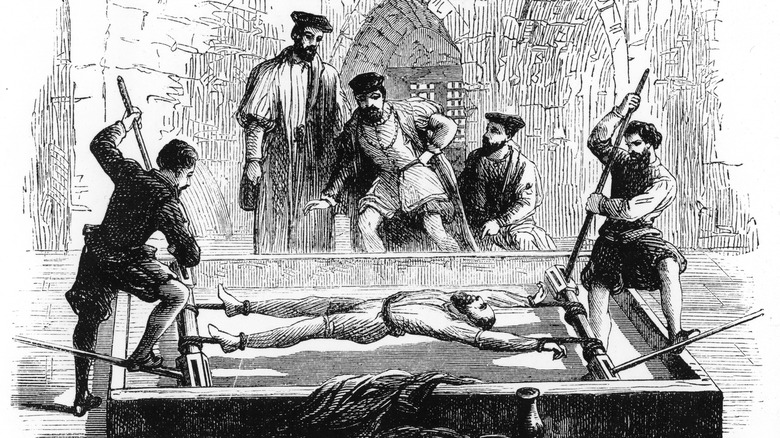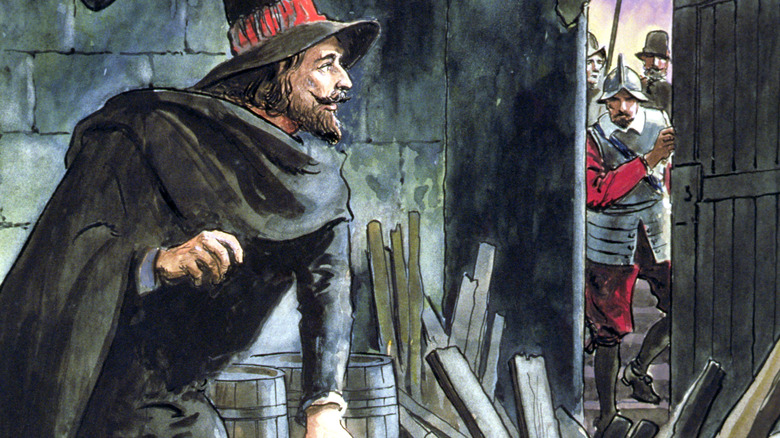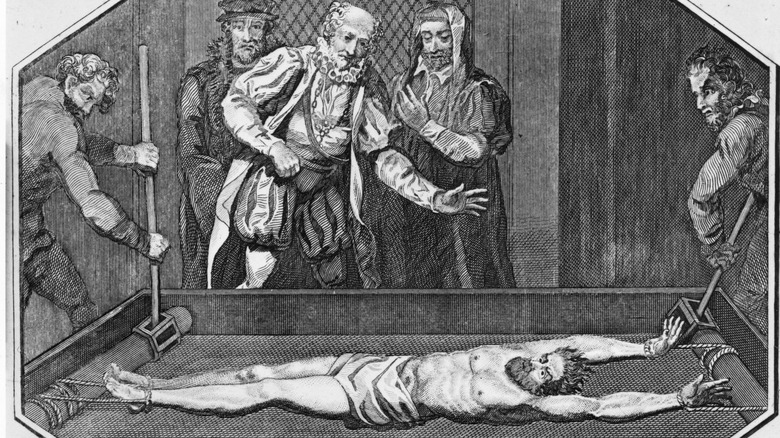The Gruesome Reality Of How The Medieval Rack Tortured Its Victims
The medieval period has a certain reputation in world history. The very term "Dark Ages" doesn't exactly invoke images of humanity coming together in a glorious, peaceful, enlightened era.
That's because, in a lot of ways, it was not a glorious, peaceful, enlightened era. It was a time of questionable personal hygiene, outrageous inequality and prolonged brutal warfare. We are indeed still grappling with issues such as these today, but it is perhaps the image of the filthy, torchlit torture chamber that comes to mind when considering the darkest moments of the medieval period.
According to Merriam-Webster, the word "torture" has its roots in the Latin word "tortus, past participle of torquēre to twist." There were certainly all manner of hideous implements for the pulling, twisting, and removing of certain parts in a Medieval dungeon, but the rack remains one of the best known. Its effects were truly horrific to even think about, let alone be subjected to.
Naturally, the confessions received under torture would frequently come about only from a desire for the pain to stop. A person's guilt or lack thereof may not even have been a factor at all. What is most frightening is just how long these horrors went on. In L.A. Parry's "The History Of Torture In England," the author writes, "in the reign of James I, torture was frequently resorted to, but mainly in cases of high treason."
The gruesome fate of the Gunpowder Plot conspirators
James I, per Britannica, ruled England from 1603 until his death in 1625, and was also Scotland's James VI from 1567. The first of England's Stuarts, according to the outlet, was unpopular in the nation for lavishing gifts upon his often-Scottish favorites. His belief in the Divine Right left him at odds with Parliament and the people, too, and some of this resentment exploded, almost literally, in the Gunpowder Plot.
As History reports, this plot was discovered on November 5, 1605. Ringleader Robert Catesby assembled a group of plotters in an attempt to kill the Protestant James I and his parliament by blowing up the parliament buildings with gunpowder, ending their poor treatment of Catholics. As it was, the famous Guy Fawkes was found in the building's basement, his explosives prepared. This treasonous act saw him interrogated and tortured, before finally being executed. One torture implement Fawkes is believed to have suffered was the rack.
Britannica explains the premise of this ghastly device. It's a simple frame of wood to which victims were tied by the ankles and wrists, and connected to a sort of roller at each end. The axles of the device could both be turned from each end, and thus the prisoner would be stretched. The idea, it seems, was for a slow and excruciating torture, which would allow for prolonged interrogation and give the victim more time to confess. They broke on the rack, physically and mentally.
It's no stretch to say it's horrendous
The human body's system of muscles, joints, ligaments and nerves is strong and sophisticated, but it can only (naturally) be pushed so far. As the racks continued to be turned, it would stretch and then dislocate crucial joints in the limbs, such as the shoulders and hips.
As the Cleveland Clinic reports, a dislocated hip is a severe injury, and can cause lifelong pain and even irreparable harm to the body. Swift care is key in such instances, and the idea of receiving no such care, the terrible dungeon treatment, and perhaps several other dislocated joints at the same time, is too horrific to contemplate.
According to All That's Interesting, Guy Fawkes' brutal treatment prior to his confession meant that he couldn't even ascend the steps to be hanged without being helped up. Per Business Insider, his signature on official documentation after being interrogated (for just over a week) had become a long, painstaking scribble, which would suggest he was indeed broken on the rack. Fawkes lived after the medieval period, but there's no doubt that his time could be as brutal as any that came before.


